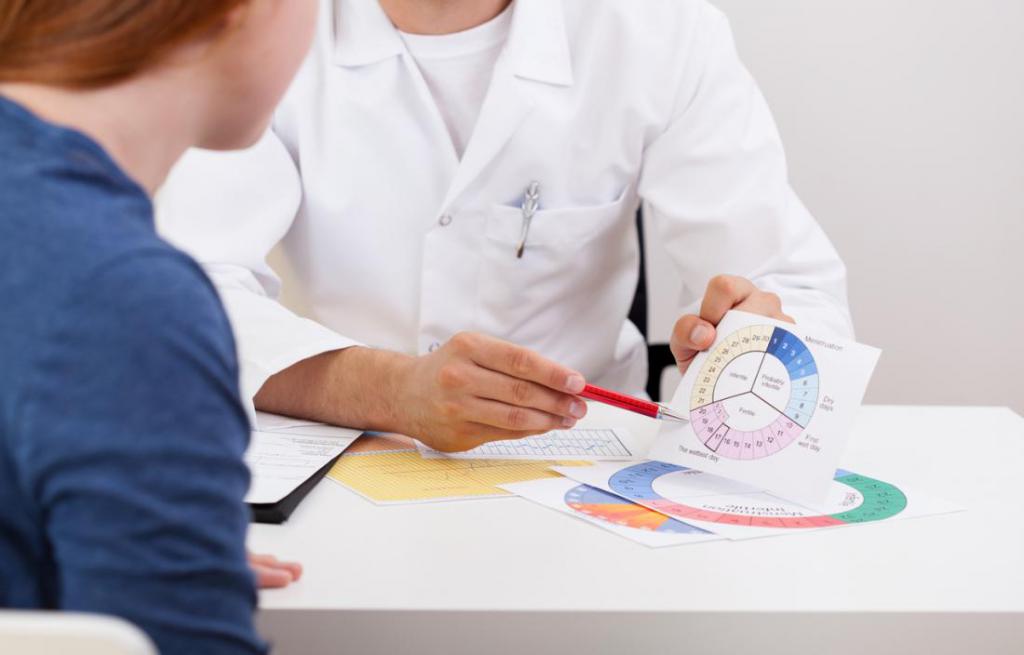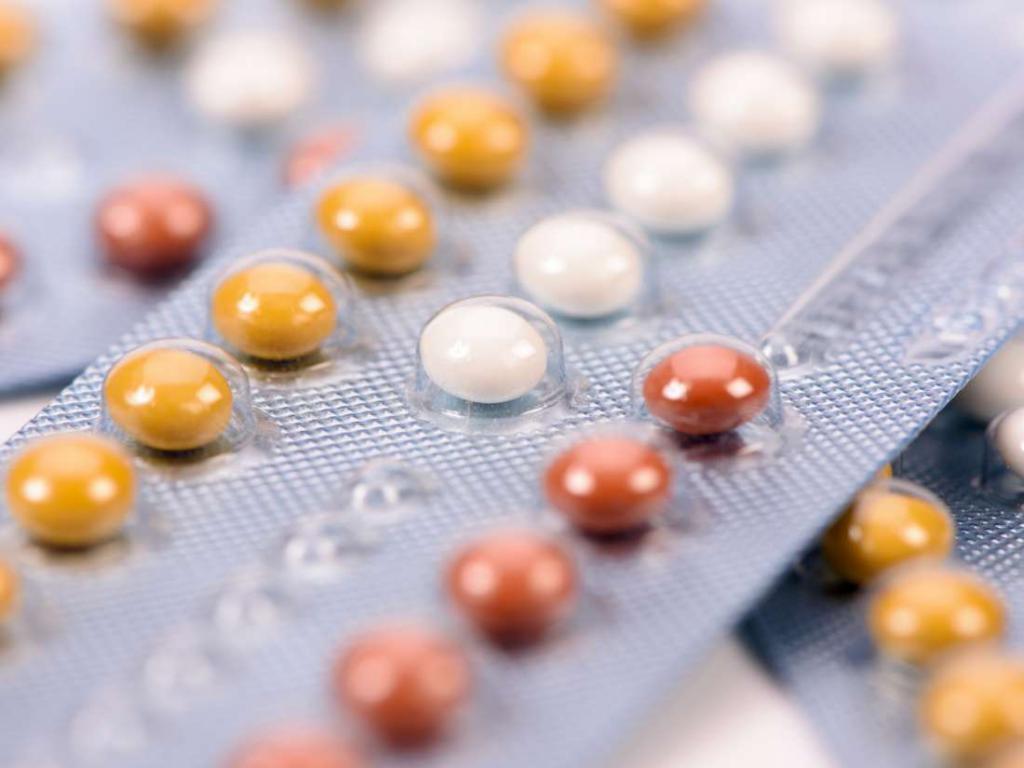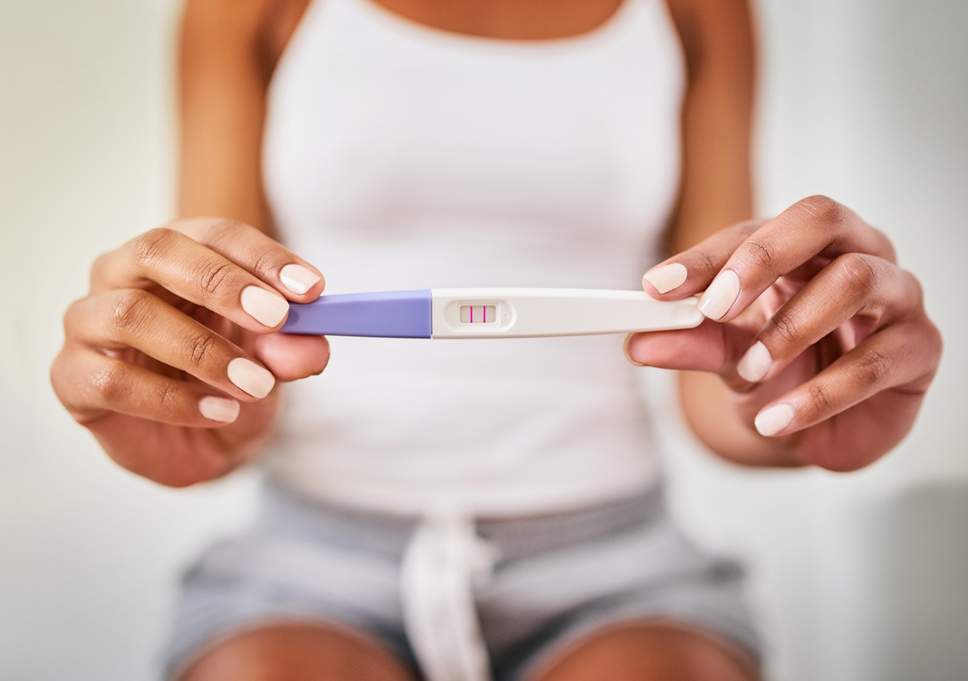Signs, symptoms and sensations of a woman with chronic endometritis indicate the development of the inflammatory process in far from all cases. Sometimes (during remission, for example) there may not be any alarming symptoms, but at the same time, the pathology continues to develop and may cause the inability to conceive and bear a child.
Acute endometritis: causes and symptoms
Symptoms of chronic endometritis appear after an untreated acute form of the disease. In most cases (80%), a chronic disease occurs in women of reproductive age and tends to spread. Acute pathology is often preceded by childbirth, abortion, curettage of the uterine cavity or other gynecological manipulations. Incomplete removal of embryo residues or the accumulation of blood clots contribute to the development of infection and inflammatory process.
Postpartum endometritis, for example, is the most common manifestation of postpartum infection. Such a pathology is diagnosed in 4-20% of cases after a natural birth, in 40% after a cesarean section. This is due to large-scale hormonal changes in the body of a woman and a general decrease in immunity. Acute endometritis can also be caused by various bacteria and viruses. The poor state of the immune, nervous or endocrine systems aggravates the course of the disease.
An acute form of a gynecological disease develops three to four days after infection. Pathology manifests itself with severe pain in the lower abdomen, increased heart rate, sensation of internal trembling, chills, frequent and painful urination, the appearance of atypical discharge from the genital tract (often with an unpleasant odor). The first symptoms are a good reason to consult a gynecologist.
At the initial examination, the doctor determines a painful and moderately enlarged uterus, purulent or successive discharge. The acute stage lasts from a week to ten days. With adequate and timely therapy, the disease ends in cure. Otherwise, the problem leads to chronic endometritis.
Causes and risk factors for chronic endometritis
Chronic endometritis (ICD - N71), as a rule, is a consequence of an incompletely cured acute disease that arose after intrauterine manipulations, childbirth or abortion. In most cases, the cause is the penetration of pathogenic or conditionally pathogenic microorganisms into the uterine cavity. Under normal conditions, protection is provided by the immune system and monthly menstrual bleeding. But these natural mechanisms do not always work properly.
Risk factors that lead to an exacerbation of the disease are the woman's age over 35 years, the presence of other chronic foci of infection and related diseases of the genitourinary system, a history of abortion and childbirth, and mechanical injuries of the uterus. Gynecological surgical interventions and manipulations, the presence of chronic inflammatory processes in the cervix and ovaries, polyps in the uterine cavity significantly increase the risk of the disease. Very often, the installation of an intrauterine device provokes endometritis.

Among the risk factors, one can also list sexually transmitted diseases, the presence of fibroids, genital herpes or cytomegalovirus, prolonged imbalance and candidiasis. Negatively affected by reduced immunity and the presence of autoimmune diseases. Pathogenic microorganisms lead to the development of chronic endometritis: cytomegalovirus, gonococcus, mycobacterium tuberculosis, ureaplasma, chlamydia, mycoplasma, genital or herpes simplex virus.
Classification according to the course of the disease
Chronic endometritis may be specific or non-specific, depending on the nature of the microflora that caused the disease. The disease can manifest itself to a moderate degree. There are subjective symptoms of chronic endometritis, pathology is visible by biopsy, ultrasound and examination show changes that confirm that inflammation is active.
The sluggish form of endometritis is manifested with minimal symptoms. Signs of the disease are visible on an ultrasound scan. By biopsy, changes that indicate inflammation can be determined, but it is inactive. At the stage of remission, the disease does not manifest itself with specific symptoms, is detected by microscopy of the altered areas of the endometrium. Often diagnosed with chronic endometritis before IVF or during the examination for infertility.
There is a classification describing the prevalence of inflammation in the endometrium. With focal chronic endometritis, the inflammatory process does not spread throughout the uterine membrane, but only in separate areas. The diffuse form of the disease is characterized by the presence of inflammation in most of the endometrium or completely in the uterine cavity. According to the depth of the lesion, chronic superficial endometritis is shared (only in the inner lining of the uterus) and the disease, when the inflammation affects the muscle layer.
Clinical manifestations of the disease
With exacerbations of chronic endometritis, the symptoms will recur. The disease will be present in the body and worsen from time to time. The main symptom of chronic endometritis is uterine bleeding of varying severity. They can appear before, before and after menstruation, as well as during the menstrual period. Bleeding can be scarce or profuse. This symptom is explained by the inferiority of the uterine layer, which normally should recover after the next menstruation.
Common symptoms of exacerbation of chronic endometritis are a slightly elevated body temperature, periodic aching pain in the lower abdomen, uterine congestion and soreness of the organ, pain during gynecological examination or sexual contact, the appearance of atypical vaginal discharge. In the presence of concomitant infections, a more pronounced clinical picture is formed.
Diagnosis of gynecological disease
Chronic non-specific endometritis or a specific gynecologist can diagnose after examination, familiarization with the results of a smear on the flora from the vagina and cervix, an ultrasound scan. During the examination on a gynecological chair, the doctor can determine the increase in the uterus and pain on palpation, areas of compaction. By smears from the cervix and vagina, inflammatory changes can be determined. Biological material is collected for bacteriological research.
Then the patient is assigned an ultrasound. One procedure is performed in the first half of the cycle, the second in the second phase. Such a diagnosis shows only signs of a chronic disease: compaction, endometrial adhesions, cysts or polyps in the organ cavity. The final diagnosis can be made on the basis of hysteroscopy.
The procedure involves examining the organ cavity using a special device. The study is conducted approximately on the seventh day of the menstrual cycle under general anesthesia. During the procedure, several sections of the endometrium are taken for a biopsy. According to the results of the study, a diagnosis is made, and also the degree of activity of the inflammatory process is clarified. The causative agent can be accurately determined by analysis of mucus from the cervix.
Treatments for chronic endometritis
Often they begin treatment of chronic endometritis before IVF, because the diagnosis is made in most cases when a woman visits a doctor with a problem of infertility. Endometritis can also be detected at a routine examination. In any case, treatment tactics are selected individually. It all depends on the activity of the inflammatory process and complications, the woman’s desire to become pregnant and the pathogen that caused the disease. In the acute phase, the doctor may recommend being in the hospital, while the chronic form of the disease is treated on an outpatient basis.

The treatment regimen usually consists of two to four stages. First, antibiotics are prescribed, to which the identified pathogen is sensitive. With active endometritis, they resort to the simultaneous use of several drugs (no more than three). In this case, one or two drugs are administered in the form of tablets, intramuscularly or intravenously, and the remaining drug - directly into the uterine cavity. If the pathology is caused by the herpes virus or cytomegalovirus, then Acyclovir is prescribed. With mycotic inflammatory process, local (suppositories) antifungal agents and tablets are indicated.
Additionally, medications that restore immunity are recommended. This is necessary to support and speedy recovery of a woman's body. Such drugs are especially important if a woman wants to become pregnant in the near future. In the presence of a large number of adhesions and polyps in the uterine cavity and the desire to have a child, surgery is prescribed. Under the control of a special chamber, adhesions are dissected and pathological formations removed.
Restoration of natural processes
Symptoms and treatment of chronic endometritis in women are interconnected at least with the need for symptomatic therapy. So, it is necessary to restore the natural processes in the endometrium. An integrated approach is used for this. Oral contraceptives are prescribed ("Janine", "Regulon" or "Marvelon"), progesterone-based drugs ("Utrozhestan" or "Dufaston"), drugs that restore blood vessels ("Ascorutin"), hemostatic drugs (aminocaproic acid or "Dicinon "). Metabolic (Methionine, Hofitol or Inosine) and enzyme preparations (Wobenzym) are also usually recommended. Anti-inflammatory drugs are needed (Diclofenac or Ibuprofen).

Symptoms of chronic endometritis necessarily require physiotherapeutic procedures. Such procedures significantly alleviate the condition of the woman, increase the effectiveness of drug and other treatment. UHF, electrophoresis, ultrasound treatment, magnetotherapy can be used. The most successful treatment is carried out in specialized sanatoriums. Additionally, there the patient is prescribed water and mud therapy, as well as the intake of mineral waters.
The treatment regimen is chosen by the doctor depending on the characteristics of the course of the disease, clinical picture, age and the patient’s desire to become pregnant. Sometimes a gynecologist may recommend “transferring” the disease to an acute form in order to quickly stop the inflammatory process with antibiotics in combination with probiotics and immunomodulators. In some cases, a doctor may consider chronic endometritis a remission and allow a woman to have artificial insemination or pregnancy in a natural way.
Chronic endometritis and pregnancy
The inflammatory process leads to a decrease in the area of a healthy endometrium, which is necessary for the successful attachment of an egg and its further development. Normally, the mucous membrane grows in the second phase of the cycle to provide the fetus with all the necessary nutrients. The complication of pregnancy with endometritis is that after a single inflammation, intrauterine adhesions or seals usually remain. The endometrium begins to function incorrectly, the menstrual cycle is violated, which leads to the inability to conceive a child or miscarriages in the early stages.
But the disease is not always an obstacle to conception. If a woman becomes pregnant with chronic endometritis, then an abortion is not done. In most patients with this diagnosis, pregnancy is terminated even before the delay, so that they do not know about its onset. If the embryo is preserved, then it is necessary to register as soon as possible so that the doctor can monitor the condition of the woman, and if necessary, promptly prescribe the necessary drugs and help maintain the pregnancy.
At the same time, endometrial dysfunction is one of the main causes of problems with conception and miscarriage. In this case, the possibility of conception and normal progression of pregnancy is not excluded. Chronic endometritis can be treated in advance so that after conception you do not have to worry about saving the child. True, the course of treatment is quite long. After chronic endometritis, you can become pregnant only after a few months. The exact dates will tell the doctor.
The course of childbirth and the postpartum period
Complications of chronic endometritis are manifested not only in problems with conception and miscarriage. Autoimmune chronic endometritis affects the general condition of a woman, and any pathological process in the body can lead to serious consequences during childbirth and in the postpartum period. This applies to contractile activity of the uterus. When inflammation passes to the muscle layer, the organ contracts worse during labor. For the fetus, it is dangerous with hypoxia and damage to the central nervous system.
In the postpartum period, symptoms of chronic endometritis in women may appear again, and treatment will need to be continued. In addition, the development of increased uterine bleeding. The cause of the pathology lies in the violation of the recovery processes. Adhesions, cysts and polyps can also form inside the body. If a certain flora is found, then the disease can be complicated by inflammation of the ovaries or fallopian tubes. This can cause inflammation of the peritoneum or blood poisoning, and also causes infertility.
Complications and prevention of gynecological disease
The endometrium is an important functional layer that ensures the normal course of pregnancy. Endometritis entails severe pregnancy complications. There is a risk of miscarriage, postpartum hemorrhage, and placental insufficiency. Therefore, pregnancy management in women with endometritis should be carried out with increased attention. Complications of the inflammatory process are adhesions and disturbed flow of the cycle, polyps and cysts. In severe cases, peritonitis may occur.
To avoid chronic endometritis, abortion should be avoided, hygiene measures should be carefully observed, infections should be prevented after abortions and childbirth, and barrier contraceptives should be used to prevent sexually transmitted diseases. The detection of infections in the early stages and adequate treatment in most cases give a positive prognosis for the following pregnancies and childbirth.